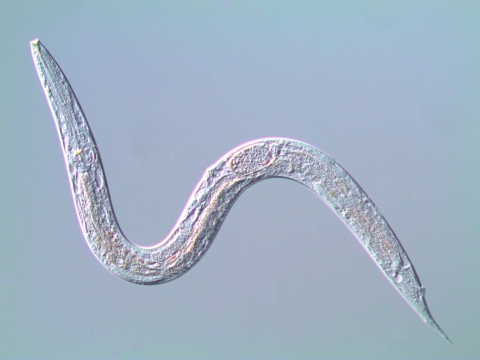New collaboration between WoRMS and Edaphobase
Edaphobase and WoRMS started a collaboration on the exchange of taxonomic information on soil biodiversity.

The international Soil Biodiversity Data Warehouse Edaphobase is a publicly open-access Data Warehouse, synthesizing and standardizing occurrence and taxonomic data on soil invertebrates, and linking it with environmental site parameters in space and time. Edaphobase is used as a data repository by European soil zoologists and as a database to explore e.g., population dynamics, species niche-space, distributions and trends of soil biodiversity. Edaphobase is hosted and run by the Senckenberg Museum of Natural History Görlitz, Soil Zoology Department and managed by the Edaphobase Steering Committee, comprising soil zoologists and software developers in charge of curation and further developing the data warehouse for the needs of the international research community.
Recently, WoRMS and Edaphobase signed a Memorandum of Understanding to establish a basis of cooperative work between the two information systems. The purpose of our joint efforts is to promote the use of biodiversity information systems for scientific research, to minimize duplication of efforts by identifying the overlaps between both initiatives and to establish open exchange of taxonomic information between Edaphobase and WoRMS.
Our first joint goal will be a close collaboration between Edaphobase and The World Database of Nematodes Nemys, an integrated part of WoRMS. Both databases will benefit from exchanging information and data already available and yet to be compiled: Edaphobase will reuse the Nematoda phylogeny of Nemys as the taxonomic backbone of its soil nematode distribution data and by this benefit from a global taxonomic database that is regularly updated by expert taxonomists. In return, country level data and trait information in Edaphobase will supplement the information on the distribution of soil nematode species in Nemys.
This agreement also contributes to the continued development of the LifeWatch Species Information Backbone (LW-SpIBB), which also aims to bring together taxonomic and species-related data, thereby filling the gaps in our knowledge and reducing duplication of efforts. The WoRMS Data Management Team (DMT) at VLIZ is supported by LifeWatch Belgium, part of the E-Science European LifeWatch Infrastructure for Biodiversity and Ecosystem Research. LifeWatch ERIC is a distributed virtual laboratory, used for different aspects of biodiversity research. The LW-SpIBB aims to bring together taxonomic and species-related data to fill the gaps in our knowledge.
Image: Oscheius dolichura (Nematoda) - Astrid König - Senckenberg Görlitz
Recently, WoRMS and Edaphobase signed a Memorandum of Understanding to establish a basis of cooperative work between the two information systems. The purpose of our joint efforts is to promote the use of biodiversity information systems for scientific research, to minimize duplication of efforts by identifying the overlaps between both initiatives and to establish open exchange of taxonomic information between Edaphobase and WoRMS.
Our first joint goal will be a close collaboration between Edaphobase and The World Database of Nematodes Nemys, an integrated part of WoRMS. Both databases will benefit from exchanging information and data already available and yet to be compiled: Edaphobase will reuse the Nematoda phylogeny of Nemys as the taxonomic backbone of its soil nematode distribution data and by this benefit from a global taxonomic database that is regularly updated by expert taxonomists. In return, country level data and trait information in Edaphobase will supplement the information on the distribution of soil nematode species in Nemys.
This agreement also contributes to the continued development of the LifeWatch Species Information Backbone (LW-SpIBB), which also aims to bring together taxonomic and species-related data, thereby filling the gaps in our knowledge and reducing duplication of efforts. The WoRMS Data Management Team (DMT) at VLIZ is supported by LifeWatch Belgium, part of the E-Science European LifeWatch Infrastructure for Biodiversity and Ecosystem Research. LifeWatch ERIC is a distributed virtual laboratory, used for different aspects of biodiversity research. The LW-SpIBB aims to bring together taxonomic and species-related data to fill the gaps in our knowledge.
Image: Oscheius dolichura (Nematoda) - Astrid König - Senckenberg Görlitz



